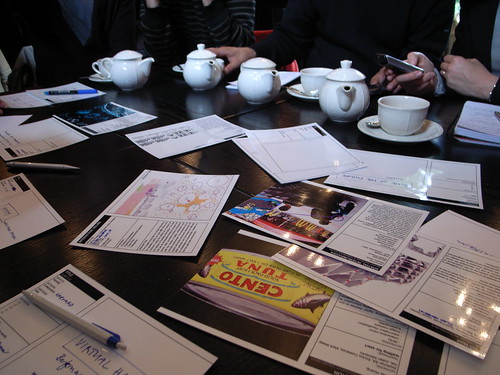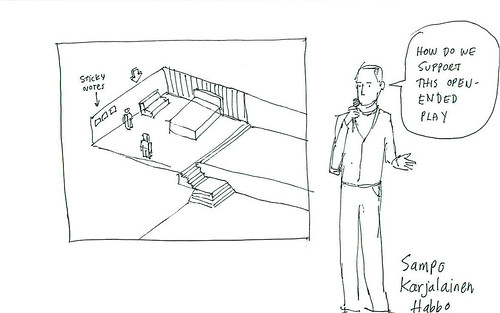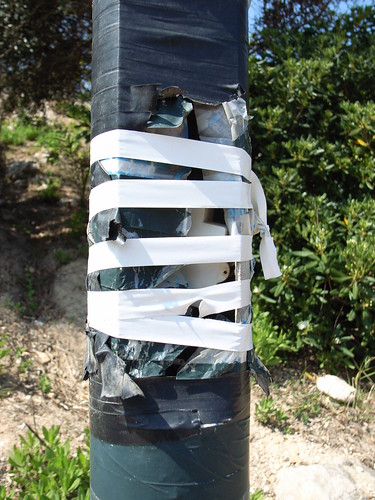Today was in Marseille (France) for a multi-disciplinary seminar about "urban research" and IT that gathered social scientists, companies (transportation systems) and managers form the public sector (city council, region, the "State", funding bodies) led by french think tank FING. Discussions were mostly about how to work together, how each of us experienced it and what are the role of the partners.
I haven't really taken notes, rather some thoughts that I was interested in.
The assumptions
The assumption here was to if the purpose is to develop urban innovation (develop applications, systems... invent the future of urban services somehow), it's not possible to do it alone but there's a need to act as a group. So if a research project about developing certain systems want to be efficient, it should involve all these people. In addition, there is also a need to be accepted. For instance people from a city council dismiss research about certain ubiquitous computing applications because the project did not involve "urban" people: "Did you work with transportation companies? Did you have a partnership with citizen's association? No hmmm okay so your project is interesting but far from reality".
Incentive to work with each others?
That said, the problem is that all the potential actors (researchers, city councils, engineers, designers, funders, etc) have different ways to apprehend reality and are evaluated differently. Alain D'Iribarne for example mentioned that researchers need to publish, politician to be (re-)elected and companies to have ROI or to have a proper time-to-market R&D (as wanted by the french state who gives tax rebate). What happen is that in the last 20 years these criteria have been strengthened and led each group of actor to follow their own path. This is clearly what I feel as a research in which the only incentive I have to work with some companies is curiosity to work on specific situations/problems (and funding of course). What is left after this categorization is that some people act as bricoleurs and try to do research that fit with companies or city councils' interests... but they have their own academic niche or stop doing what is thought as "pure" academic research.
Classic debate
All of this lead to the classic debate about the role of researchers in our modern societies: who should pick up the research topics? why funding that?
A public company complained about the fact that they haven't found any interesting new theories that would change the way they act as a transportation structure in the last 20 years (as opposed as the person said, to "big science" who can sinking their teeth into big physics theories...) I don't know if this is a fact or an opinion (I'm prudent but IMHO it's an opinion) but it shows that there is certainly a problem here.
Of course, companies (public or private) brought to the table the fact that they need a more finalized research both about the content (research questions) and the method ("we don't want 120 pages report"). There is indeed a growing need to have researchers working with company people and implement their ideas, "not just throw them in the air".
Different rhythms
A side topic was also the importance of time. It has been said that railways or metro are build for a certain amount of time (100 years for railways, 40-50 years for metro), given the investment. One of the attendant was concerned about how to articulate this with technologies that change every 2-3 years. How to predict that you may need to build infrastructure (like metro tunnel and station) that are big enough to be modified with new technologies? Where can you put electrical infrastructures, GSM and Wifi boxes in a 100 years-old metro station when it's impossible to add any new artifacts because it's so packed that fear to fall on the railways?
What did I learn?
Of course this debate about what research should be is a bit cliché but we really have to deal with it. I can feel it in my own professional work: how to balance the need to have multi/inter/trans-disciplinary work required by ubiquitous computing and the current system? That is to say, more pragmatically, how to survive as a researcher who need to publish but might break the "rules" of publication by adopting new methods, concepts, paradigms, etc.?
Further out, this leads me to think that there is a strong need for certain stakeholders (city coucils, regions, public companies, private companies) to conduct projects at the crossroads of research and consulting. Hence a need, perhaps, of new structure closer to think tanks than consultancies. This definitely resonates with all the shell I belong to (simpliquity, near future laboratory, liftlabs).





 (Picture by myself, overview of my desk)
(Picture by myself, overview of my desk)
